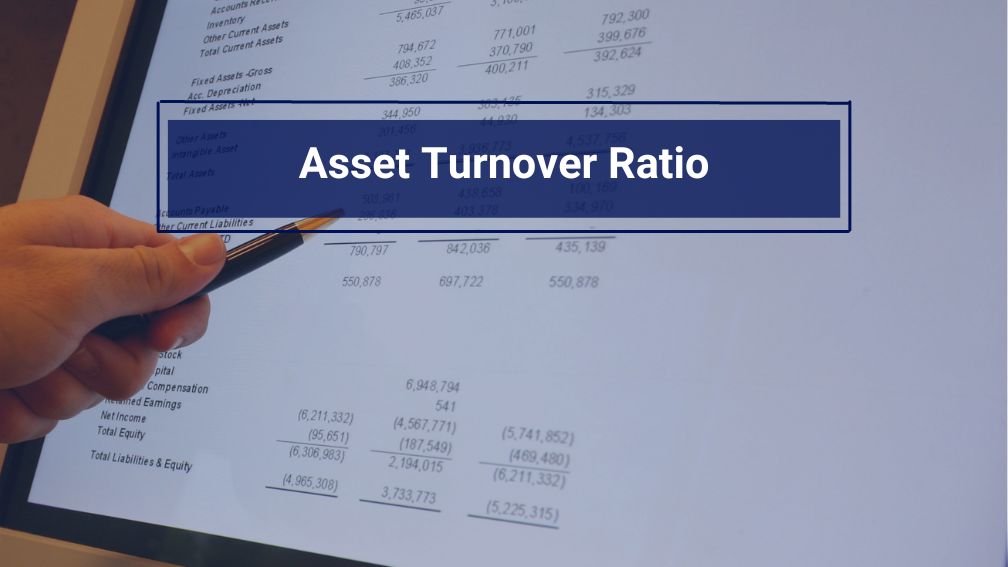Impact of ASC 842 on Asset Turnover Ratio
Last Updated on July 23, 2025 by
What is the Asset Turnover Ratio?
The Asset Turnover Ratio is a key financial ratio used to measure a company’s efficiency in using its assets to generate revenue. It reveals how much revenue a company earns for every dollar of assets it owns, making it a valuable indicator for financial statement users, credit agencies, and external auditors monitoring a company’s financial position.
Asset Turnover Ratio = Net Sales / Average Total Net Fixed Assets
Cash flow estimates can be created based on the asset turnover, ultimately giving financial analysts a clear view of a company’s financial performance by taking the lease assets and subtracting the lease liabilities.
How ASC 842 Impacts the Asset Turnover Ratio
The Financial Accounting Standards Board (FASB) introduced ASC 842 to increase transparency in lessee accounting. Under this new accounting standard, companies must recognize most commercial real estate leases on the lessee’s balance sheet as both a right-of-use (ROU) asset and lease liability—unlike the previous GAAP (ASC 840), which limited recognition to capital leases.
This shift has a direct impact on key financial ratios, including the Asset Turnover Ratio. Here’s how:
- The inclusion of ROU assets increases the total assets figure, the denominator in the Asset Turnover calculation.
- This change often leads to a decrease in the Asset Turnover Ratio, especially for companies with a large lease portfolio.
- As a result, companies may appear less efficient, even if their operating performance remains unchanged.
It’s important for users of financial statements, including the Securities and Exchange Commission, to recognize that this ratio decline is often due to new information being reported—not a deterioration in actual performance.
How to interpret changes in Asset Turnover Ratio due to ASC 842?
A decrease in this ratio doesn’t necessarily mean a company is generating less revenue from its assets. Instead, it reflects the more complete picture of identified property, tangible property, and lease-related obligations now captured under ASC 842.
For example, under ASC 842:
- Leases once considered operating expenses now require capitalization.
- Future lease payments, including variable payments and guaranteed residual value, are reflected as liabilities.
- Discount rates, often the lessee’s incremental borrowing rate or a risk-free rate, determine the present value of future payments.
These factors, including initial direct costs, lease incentives, and purchase options, increase asset values on the balance sheet. For organizations reporting under generally accepted accounting principles (GAAP) or International Financial Reporting Standards (IFRS), this directly affects corresponding ratios like the Asset Turnover Ratio and metrics such as net income, total equity, and cash flow from financing activities.
What Commercial Tenants Should Consider
For commercial tenants, especially those managing multiple leases for office space, warehouses, or other property types, the implementation of ASC 842 means:
- More robust internal controls around lease data, especially regarding lease commencement dates, renewal options, and accounting policy elections.
- Proper classification between sales-type and direct financing leases, short-term leases, and operating leases is essential for compliance.
- Accurate calculations using the effective interest method and interest income recognition on net investment in leases.
- Reassessment of debt covenants, since total debt and long-term debt figures may rise under the new lease accounting rules.
Additionally, nonprofit organizations and private companies should pay special attention to fiscal years and annual reporting periods affected by these changes. Tools like lease accounting software can help streamline compliance, especially when dealing with weighted-average discount rates, rent payments, and disclosure requirements including footnote disclosures on leasehold improvements.
Final Thoughts
The new leasing standard under ASC 842 represents a major shift in how leases are reflected in financial statements. While the Asset Turnover Ratio may decline post-adoption, this doesn’t imply reduced efficiency. Instead, it reflects a more accurate portrayal of a company’s economic benefits and obligations from leasing activities.
For tenants in the commercial real estate space, understanding the impact on ratios, internal reporting, and company performance is crucial. Whether assessing the asset’s fair market value, evaluating a purchase option, or reviewing lease classification, the key is to view these metrics through the lens of ASC 842 compliance and the updated accounting principles driving the change.
